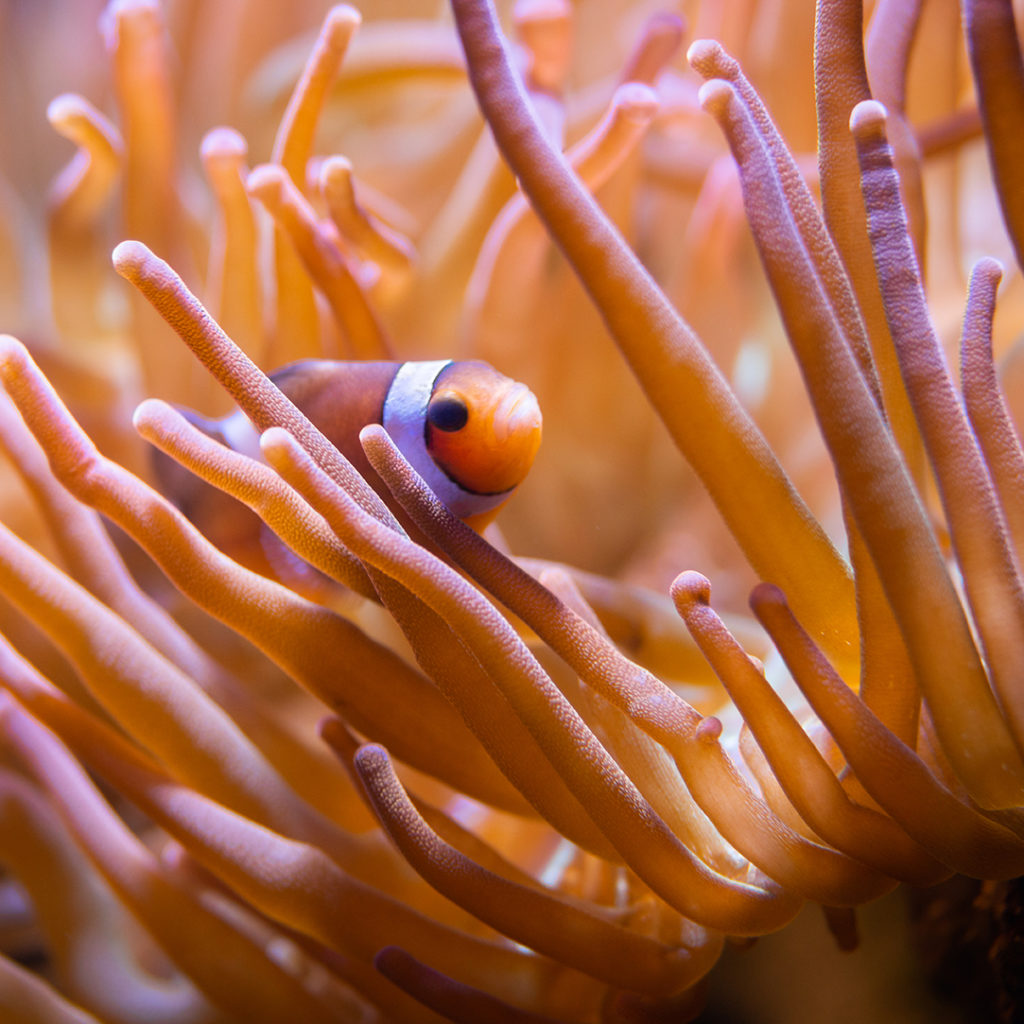Eyes on Science

Fin-tastic Activities
Discover Symbiosis
Did you know many animals rely on each other and even have lifelong “friendships” with other organisms? These are called symbiotic relationships. Symbiotic relationships can be broken down into several types, which include commensalism and mutualism.
Commensalism is when only one organism benefits from the interaction, and the other is not affected. For example, when bison walk through grass, insects become active and are seen and eaten by cowbirds. The cowbirds benefit from the bison, but the bison is neither harmed nor benefited. Mutualism is a relationship where both organisms benefit. An example includes the blue streak cleaner wrasse, a small fish that can be observed cleaning inside the mouths of large predatory fish. The large fish will suspend their natural feeding instincts, patiently waiting open-mouthed while the wrasse picks their skin clean of parasites and dead tissue. The tiny cleaners enjoy an all-you-can-eat feast without threat, and their patrons are awarded healthy teeth, gills, and skin. Now that’s a win-win friendship!
More Ways to Explore*
Check out more resources about animal friendships and symbiosis at the links below.
https://www.nationalgeographic.org/article/symbiosis-art-living-together/
https://media.nationalgeographic.org/assets/file/Symbiotic_Interactions_1.pdf
https://www.nationalgeographic.org/lesson/symbiotic-relationships-marine-ecosystems/
*External links are provided for informational purposes only; they do not constitute an endorsement by LLPA nor is LLPA responsible for the accuracy, legality, or content of the external site.

